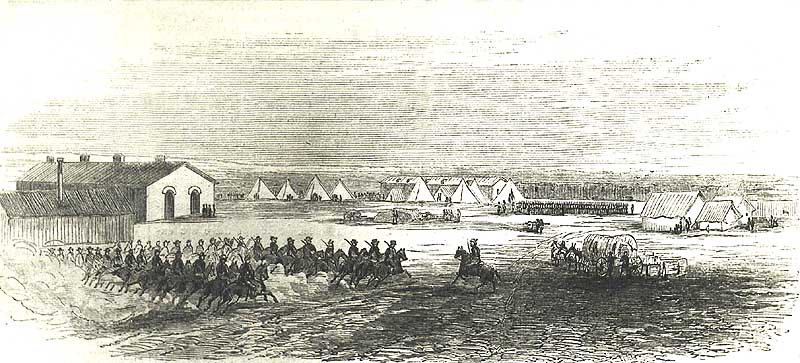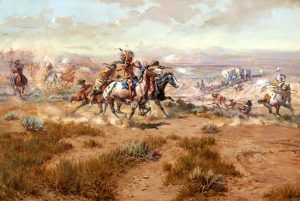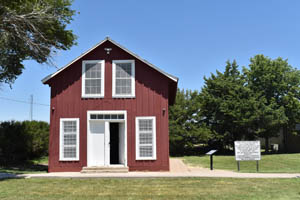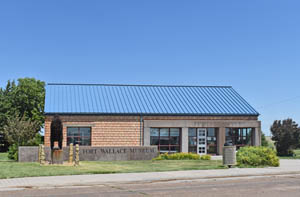Fort Wallace, Kansas, was first established as a Butterfield Overland Dispatch station on the Smoky Hill Trail in 1865. It was called the Pond Creek Stage Station. Located 1 ½ miles west of present-day Wallace, Kansas, the stop was a rest station that provided food to travelers. However, the route was not without peril, and the station saw so many Indian attacks that a temporary military camp called Camp Pond Creek was situated right next to it. Due to the Indian raids, the stage line soon became insolvent, and in 1866, it was sold. The soldiers moved a few miles east to the south fork of the Smoky Hill River, and the new post was named Fort Wallace in honor of General W.H.L. Wallace, who died at the Battle of Shiloh, Tennessee in the Civil War. Built by the soldiers, the buildings were constructed of native stone or wood, which peaked at 40 in number.
The westernmost frontier post in Kansas was kept busy trying to protect travelers as the Indians, whose homeland was being invaded, continued to attack. The troops, which never exceeded more than 350, and averaged just 75, saw more Indian encounters than any other fort, earning Fort Wallace the nickname the “Fightin’est Fort in the West.”
In addition to the constant dangerous battles, the soldiers suffered from a lack of food and several disease outbreaks, including cholera in 1867. That same year, in June, Lieutenant Lyman Kidder led ten men from the 7th Cavalry from Fort Wallace, headed for Fort Sedgwick, Colorado. They never made it. All eleven of the men were killed by Indians at Beaver Creek in present-day Sherman County on July 1, 1867.
During the years the fort operated, several influential men were stationed at the fort, including General George Armstrong Custer, who fought in his first Indian battle not far from the fort, as well as Buffalo Bill Cody, Wild Bill Hickok, and George Forsyth.
The troops continued to protect the trail until it was officially decommissioned on May 31, 1882. A small detachment of soldiers was left to protect the fort for some time, but they too eventually were removed. Because of the scarcity of materials in the region, settlers scavenged building materials and sometimes moved entire buildings from the post. Within a few short years, everything was gone.
Though nothing remains of the fort itself, but the city of Wallace features the Fort Wallace Museum and the Pond Creek Stage Station located just to the southeast.
©Kathy Alexander/Legends of America, updated March 2022.
Also See:




